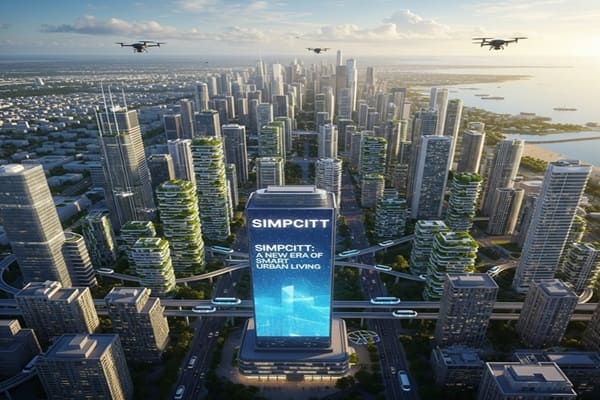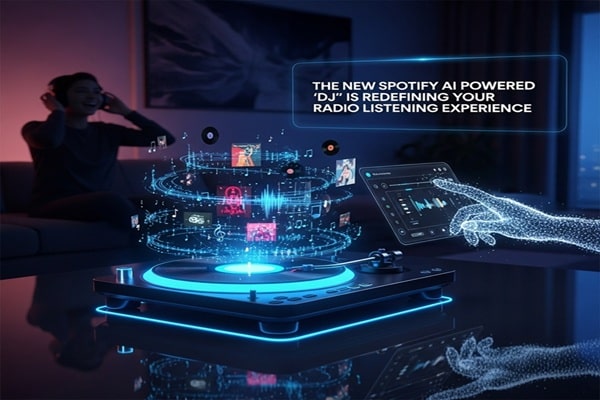If you’ve been following conversations about smart cities, sustainable living, or AI-driven urban planning, you’ve probably heard the name Simpcitt pop up more than once. And if you haven’t—don’t worry. By the end of this article, you’ll know exactly why people are calling Simpcitt a blueprint for the cities of tomorrow.
Think of it this way: we’re living in a world where climate change, overcrowding, and outdated infrastructure are putting a ton of pressure on our cities. Traditional solutions just aren’t cutting it anymore. That’s where Simpcitt comes in—a forward-thinking model that blends artificial intelligence, green energy, and community-first planning to reimagine urban life.
So, what makes Simpcitt different from all the other “smart city” ideas you’ve heard before? Let’s dive in.
What Exactly Is Simpcitt?
At its core, Simpcitt (short for Simple City Technology) is a next-gen approach to building cities that are:
-
Smart – powered by AI, sensors, and real-time data.
-
Green – designed with sustainability and renewable energy in mind.
-
Inclusive – accessible to everyone, no matter their age, income, or abilities.
-
Human-centric – not just about tech, but about making everyday life easier and more enjoyable.
Unlike some smart city concepts that focus mostly on gadgets and Wi-Fi upgrades, Simpcitt prioritizes people first. It’s about designing environments that work with you—from how you commute, to how you access healthcare, to how safe you feel walking at night.
How Simpcitt Works in Real Life
Simpcitt isn’t just theory—it’s already being tested in different parts of the world. Here’s a look at its core features and how they’re transforming city life:
1. Smarter Infrastructure
Imagine roads, buildings, and public spaces that literally respond to what’s happening around them. In Simpcitt, infrastructure is loaded with IoT sensors that:
-
Adjust streetlights automatically based on movement.
-
Monitor traffic to reduce congestion.
-
Track water usage and prevent waste.
-
Predict when roads or bridges need maintenance.
The result? Less wasted energy, smoother commutes, and safer streets.
2. Clean, Renewable Energy Everywhere
One of the biggest goals of Simpcitt is achieving carbon neutrality. That means zero net emissions—and it’s done through:
-
Rooftops with built-in solar panels.
-
Micro wind turbines woven into building designs.
-
Smart energy grids that balance supply and demand.
-
Community-based energy sharing using blockchain.
Instead of relying on massive power plants, neighborhoods generate and share their own clean energy.
3. AI That Works With People (Not Against Them)
Artificial intelligence in Simpcitt isn’t about replacing humans—it’s about helping leaders and citizens make smarter choices. For example:
-
Public transport routes adjust in real-time to rider demand.
-
Emergency services use predictive analytics to cut response times.
-
Healthcare resources are distributed based on community needs.
-
City maintenance gets scheduled before things break down.
And here’s the key: all of this happens with transparent data practices. Citizens can see what data is collected, how it’s used, and even weigh in on decisions.
4. Privacy and Data Protection
Let’s be honest—smart cities raise big questions about surveillance and privacy. Simpcitt addresses this head-on with:
-
Encrypted, anonymized data collection.
-
Consent-first policies.
-
Open data portals for public review.
-
Citizen panels that oversee data ethics.
So instead of feeling “watched,” residents feel empowered.
A Day in the Life in Simpcitt
Picture this:
-
You wake up to your apartment automatically adjusting the blinds, starting your coffee, and giving you an air-quality update.
-
A driverless electric shuttle arrives right on schedule.
-
Parks water themselves only when the soil is dry—no wasted resources.
-
Your city app alerts you to nearby events and traffic updates, keeping you in the loop.
Every touchpoint in your day is designed to save you time, energy, and stress—without compromising your privacy.
Why Simpcitt Puts People First
A city isn’t just buildings and tech—it’s communities. Simpcitt focuses heavily on inclusion, accessibility, and civic engagement.
Digital Inclusion
High-speed internet is treated as a basic human right. Public spaces offer free connectivity, and apps are:
-
Multilingual.
-
Voice-enabled for seniors.
-
Fully accessible for people with disabilities.
This levels the playing field so everyone can participate in digital life.
Civic Engagement
Forget the old “city hall meeting” where only a handful of people show up. In Simpcitt, citizens can:
-
Propose projects through the Simpcitt Civic App.
-
Vote on neighborhood upgrades.
-
Join virtual town halls in immersive 3D.
-
Track exactly where city funds are being spent.
It’s participatory democracy in action.
Education and Healthcare, Upgraded
Smarter Schools
Kids in Simpcitt learn in AI-powered classrooms that adjust lessons to each student’s pace. Think:
-
Real-time feedback for teachers.
-
Personalized learning through AR/VR.
-
Community projects that connect students to real-world problem-solving.
Healthcare That’s Proactive
Instead of reacting to problems after they happen, Simpcitt uses data to predict and prevent. That includes:
-
Spotting flu outbreaks before they spread.
-
Scheduling mobile clinics in underserved areas.
-
Telemedicine appointments at your fingertips.
-
Automatic medication delivery for at-risk groups.
It’s healthcare that meets you where you are.
Also Visit : Íbufen – Uses, Benefits, Dosage, and Safety Guide
New Jobs and Economic Growth
Simpcitt isn’t just good for residents—it’s a hotbed for innovation and entrepreneurship. Startups thrive with access to:
-
Public data sets for research.
-
Shared workspaces and incubators.
-
Funding through civic-backed platforms.
And it’s not only about tech jobs. Careers in urban farming, renewable energy maintenance, and community-based services are also booming.
Getting Around in Simpcitt
Traffic jams? Not here. Mobility is one of Simpcitt’s strongest pillars. Cities feature:
-
AI-optimized bus and shuttle systems.
-
Autonomous, electric vehicles.
-
Smart bike-sharing and pedestrian-first design.
-
Car-free “Zero Emission Zones” downtown.
Even logistics are green—drones and robot carts handle deliveries so people can enjoy uncluttered streets.
Challenges and Criticisms
Of course, no system is perfect. Simpcitt faces real challenges like:
-
High upfront costs for infrastructure.
-
Concerns about over-reliance on AI.
-
Risks of “techno-elitism” if access isn’t equal.
But here’s the thing: Simpcitt is designed to evolve. Continuous citizen feedback loops and transparent governance help the system adapt and improve.
Global Adoption: Where It’s Happening Now
Simpcitt isn’t just theory—it’s being tested worldwide. Some early examples include:
-
Helsinki, Finland – experimenting with microgrid neighborhoods.
-
Busan, South Korea – developing a smart waterfront.
-
Kenya – building smart villages that merge agriculture and tech.
-
Toronto, Canada – testing modular smart blocks.
Each project tweaks the Simpcitt model to fit local culture and needs, proving it’s not one-size-fits-all.
Why Simpcitt Really Matters
At the end of the day, Simpcitt isn’t just about shiny tech or futuristic gadgets. It’s about creating cities that actually work for people. Cities that are sustainable, safe, connected, and fair.
As the world’s population grows and resources get stretched, models like Simpcitt could be the difference between just surviving and truly thriving in urban life.




